
8th ANNUAL


8th ANNUAL
2024 | Unlocking Canada’s Potential for Abundant Oceans


Five years after the passing of the modernized Fisheries Act, Canada’s progress in restoring fish populations has been slow and inconsistent. As a result, marine ecosystems and the coastal communities that rely on them continue to pay the price. Despite increased application of management tools, such as reference points and rebuilding plans, the recovery of depleted fisheries has been hampered by inconsistent decisions and a lack of urgency. This underscores a critical opportunity to apply a proven solution: rebuild fisheries for long-term abundance, food security, and sustainable prosperity.
When Oceana Canada published its first Fishery Audit in 2017, only a third of Canada’s fish populations were considered healthy, and the status of 36% of stocks was unknown. These findings sparked a call for legislative action to reverse the decline of wild fish and restore abundance to Canada’s oceans.
In 2019, the federal government passed a more robust and modernized Fisheries Act, providing the necessary tools to turn this vision into reality. Five years later, the new legislative framework has indeed resulted in measurable management improvements on some indicators, but the status of Canada’s fish stocks has barely moved: 35% are now considered

“healthy, and 35% remain unknown. A key reason for this tepid improvement is the slow progress by government to roll out the new legal requirements and implement its own policies, robbing Canadians of the full benefits of sustainable fisheries management.
Case in point: today the robust rebuilding provisions of the new Fisheries Act apply to just 30 out of almost 200 stocks
At the current pace, it will take 16 years to provide all stocks with the protection they need, leaving Canada’s fisheries vulnerable for too long. With accelerating impacts from climate change, this means that the majority of fish populations continue to be at risk of further decline. This is bad news for marine ecosystems and coastal economies, which depend on healthy fisheries to sustain livelihoods, food security, and biodiversity.
Only four of the 33 stocks in the critical zone — a mere 12% — have a publicly available rebuilding plan in place. Although plans for eight more stocks were approved by the Minister of Fisheries, Oceans and the Canadian Coast Guard in April 2024,1 none of them had been made public by the July 1, 2024 cut-off for this Audit, and most remain unpublished as of October.2
The modernized Fisheries Act gives Canada the tools it needs to create abundant oceans that benefit communities, economies, and the planet. But every delay implementing it leaves the country’s fish stocks in double jeopardy from overfishing and climate change.”
— Josh Laughren, Executive Director,
Oceana Canada
1 Nine including Okanagan Chinook salmon. However, Oceana Canada’s audit stock list consists exclusively of marine species. Another two rebuilding plans, for Atlantic cod (3Pn4RS) and Northern shrimp (SFA 6), were approved in July 2024, outside the timeframe of this Audit.
2 Approved rebuilding plans for Atlantic mackerel and Atlantic cod (3Ps) were both published in September 2024, outside the timeframe of this Audit.
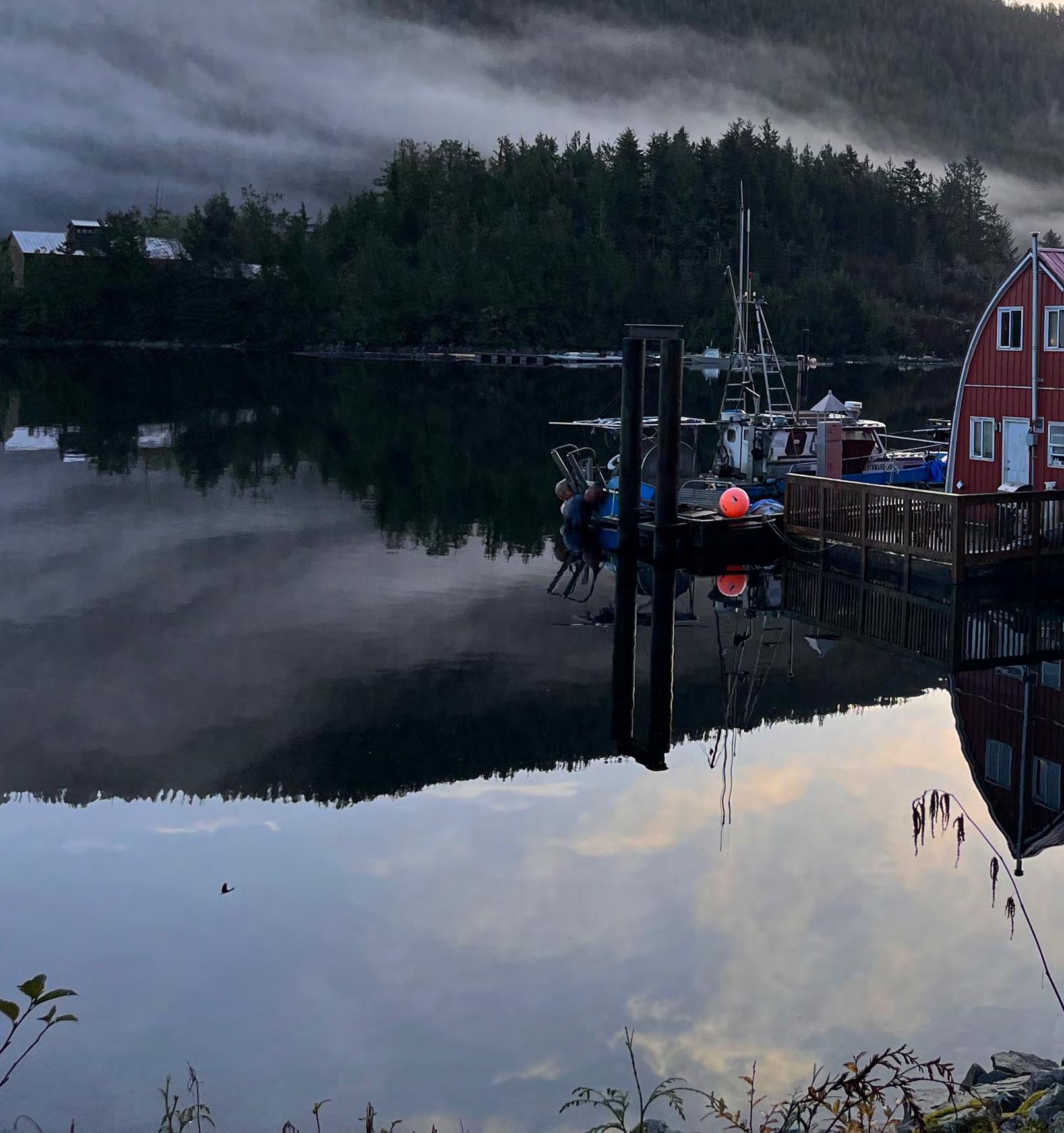
Rebuilding critically depleted fish stocks is now the law, but 88% still lack comprehensive recovery plans.
These delays undermine efforts to rebuild key species, leaving marine ecosystems in jeopardy and compromising future economic opportunities.
Meanwhile, the broad discretion afforded to the Minister still results in too many management decisions based on political calculations rather than scientific advice. A case in point is the commercial opening and increased quota for the northern cod fishery, despite Fisheries and Oceans Canada (DFO) acknowledging that there aren’t enough capelin — cod’s primary food source — to support it, nor any plan to prevent imminent decline back into the critical zone.
And while we’ve seen a drop in the number of stocks whose health status is unknown, more than a third still fall in that category due to insufficient data. Major gaps in dependable, timely, and accessible data prompted Canada’s Auditor General to admonish DFO last November for failing to
properly monitor commercial fisheries, raising questions about the long-term sustainability of current management practices.
At the same time, DFO has proven what’s possible when it takes strong, effective action to support Canada’s fisheries.
Today, the number of healthy fish stocks is inching up. Atlantic mackerel and Haida Gwaii herring — crucial forage fish that are the backbone of marine ecosystems — are showing signs of recovery due to science-based decisions, effective management, and partnerships with Indigenous communities. This illustrates the critical role that pairing Indigenous Knowledge Systems with modern fisheries science plays in rebuilding ecosystems and sustaining coastal livelihoods.
Meanwhile, an impressive recovery of redfish in the Gulf of St. Lawrence made it possible to reopen the fishery in 2024

after a nearly 30-year commercial moratorium, with new measures to mitigate bycatch of critical groundfish stocks.
There’s more transparency in decision-making and more scientific data to inform those decisions. The percentage of stocks with limit reference points and upper stock references has increased significantly since 2017, helping managers set appropriate harvest limits. And there’s been a big increase in the number of stocks with management documents that reference the effects of climate change on stocks — an increasingly urgent concern as climate impacts on marine ecosystems intensify.
Management frameworks are also improving. The vast majority (90.7%) of stocks are included in Integrated Fisheries Management Plans designed to ensure long-term sustainability.
Examples of successful co-governance, like the 2021 Fisheries Resources Reconciliation Agreement with coastal First Nations in B.C. and the partnership with the Council of the Haida
Nation to rebuild herring, provide important examples of how Indigenous Knowledge Systems and Western science can be combined to set the course for healthy ecosystems and fisheries.
These are welcome improvements. But much more needs to be done.
Today, only 35% of Canada’s fish stocks are healthy. But with appropriate measures, that number could rise to 80% within a decade, ensuring the long-term health of our oceans and the communities that rely on them. 3
The stakes are high. Canada’s fisheries employ tens of thousands of people and feed millions more.
This report highlights the current condition of Canada’s fish stocks and provides a roadmap for restoring abundance — critical steps toward creating oceans teeming with life, feeding the world, and supporting coastal communities for generations to come.
3 Derived from methodologies outlined in a recovery projections analysis, applied to stocks with updated 2024 statuses, using conservative assumptions for those with uncertain statuses. Source: McLennan, L., Schijns, R., and Rangeley, R. (2023). Projections of fishery recovery in Canada. In: Fishery Audit 2023: Unlocking Canada’s Potential for Abundant Oceans. Oceana Canada. https://oceana.ca/wp-content/uploads/sites/24/2023/11/A3.-Projections-of-Fishery-Recovery-in-Canada.pdf
Oceana Canada’s latest Fishery Audit reveals that despite some progress, current scientific and management efforts are failing to meet national commitments. Over the last eight years there has been little change in the overall status of the Canadian marine fish and invertebrate stocks evaluated. But as climate change, fishing pressure and pollution intensify, the need to safeguard and rebuild marine biodiversity has never been more urgent.
The state of Canada’s marine fisheries today can be summed up as:
• Unhealthy: A third of marine fish and invertebrate populations are either critically depleted or in the cautious zone, while just over one-third can be considered healthy.
• Without a status: Thirty-five per cent of all marine fish and invertebrate populations are classified as uncertain due to insufficient reference points and stock status information.
• Mostly unprotected: Rebuilding plans have been published for only four of 33 critically depleted stocks. Although eight new rebuilding plans were approved this year,4 they have yet to be made public, and there is no legal obligation to initiate rebuilding plans for the remaining depleted stocks.
This scorecard presents the top-line results for 2024, while a deeper dive into the findings begins on page 8.
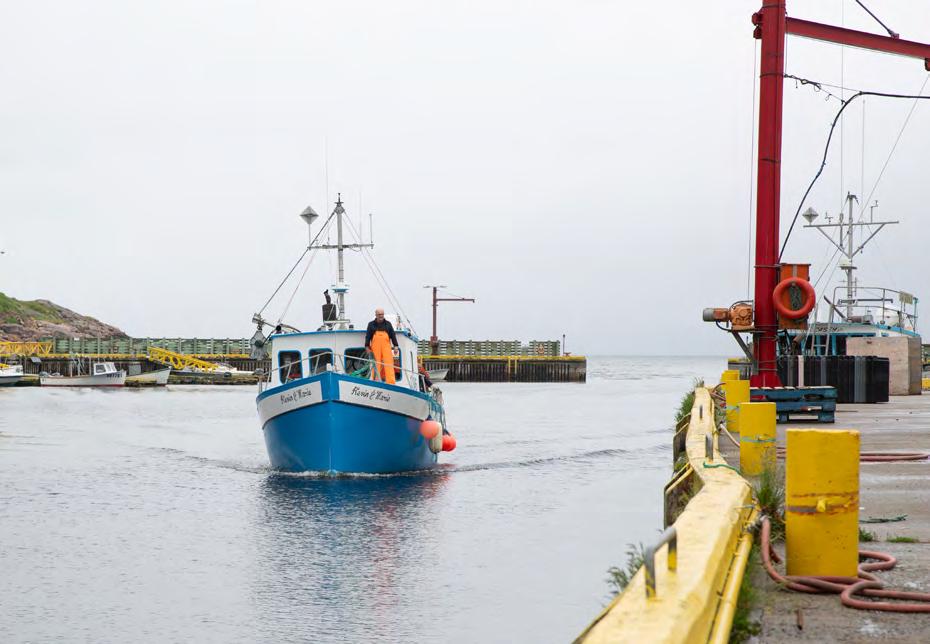

“The state of our fisheries is far from what it could be, and less than we should accept. By implementing effective fisheries management, we can reverse declining trends and secure lasting benefits for both the ecosystem and future livelihoods.”
4 A rebuilding plan was also approved for Okanagan chinook salmon, which is not covered in this Audit as Oceana Canada’s index stocks consist exclusively of marine species. Another two rebuilding plans, for Atlantic cod (3Pn4RS) and Northern shrimp (SFA 6), were approved in July 2024, outside the timeframe of this Audit.
DFO has three categories of fish stock health. They are often defined relative to the stock biomass that would produce a maximum sustainable yield (BMSY). Maximum sustainable yield is the largest volume of fish that can theoretically be harvested without reducing the size of the population over the long term.5
A stock is considered healthy if its biomass is greater than 80% of that which would support BMSY. When a stock is in this zone, fisheries management decisions are designed to keep it healthy.
A stock falls in the cautious zone if its biomass is between 40% and 80% of BMSY. If a stock falls into this zone, harvesting rates should be reduced to avoid seriously depleting it and to promote rebuilding to the healthy zone.
A stock falls in the critical zone if its biomass is less than 40% of BMSY If a stock moves into the critical zone, serious harm is occurring, and conservation actions become crucial. Under Canada’s modernized Fisheries Act, rebuilding plans are now legally required for stocks in the critical zone.
The use of MSY-based reference points under the Precautionary Approach policy is consistent with international standards. However, the approach is increasingly criticized for failing to meet broader social-ecological objectives and failing to incorporate complementary Indigenous Knowledge Systems.6
5 Maximum sustainable yield (MSY) is a globally accepted standard for fisheries management. The UN Food and Agriculture Organization’s Code of Conduct for Responsible Fisheries, to which Canada is a signatory, indicates that governments or other agencies responsible for fisheries management need to adopt appropriate measures, based on the best scientific evidence available, which are designed to maintain or restore stocks at levels capable of producing MSY.
6 Frid, A., Wilson, K.L., Walkus, J., Forrest, R.E., Reid, M. (2023). Re-imagining the precautionary approach to make collaborative fisheries management inclusive of Indigenous Knowledge Systems. Fish and Fisheries, 24: 940-958. DOI: 10.1111/faf.12778.
Good management decisions are based on a precautionary approach. This means being cautious when scientific knowledge is uncertain and taking action to avoid serious harm to fish stocks and the marine ecosystem even when adequate information isn’t available.
Pairing Indigenous Knowledge Systems with ecosystem-based management and modern fisheries science strengthens efforts to rebuild ocean ecosystems. Indigenous Peoples have stewarded ecosystems for millennia, drawing on deep, place-based understanding, multi-generational perspectives, and cultural practices that are essential for sustaining local ecosystems.
Partnerships are critical for addressing the interconnected challenges of climate change and biodiversity loss, creating a more balanced and holistic approach to caring for the oceans and the communities that depend on them.
Pairing Indigenous Knowledge Systems with ecosystem-based management and modern fisheries science strengthens efforts to rebuild ocean ecosystems.

Sound science to understand the status of stocks, their biology, and how fishing pressure and environmental factors will affect them in the future.
Effective monitoring to determine how many fish are harvested and discarded from all sources of fishing activity.
Good management decisions based on data that considers stocks in the context of a changing ecosystem and prioritizes longterm health and abundance over short-term yields.

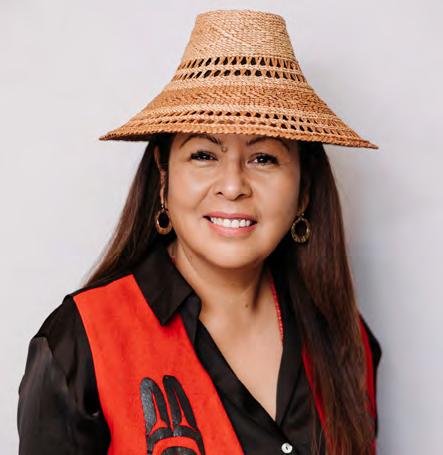
“Adopting and weaving Indigenous knowledge and value systems among modernized fisheries management frameworks fosters deeper connections to the environment and a broader understanding of ecosystem dynamics. Shared decision-making with the ancestral stewards of the lands and waters is proven to build stronger partnerships, ensuring that conservation and economic recovery continue to be the shared goal for restored and resilient fisheries.”
— Christine Smith-Martin, CEO Coastal First Nations - Great Bear Initiative
This year, positive developments included an increase in stocks with upper and lower reference points, natural mortality estimates, climate change considerations, and recent stock assessments. But progress is slow. A third of stocks still lack limit reference points, and the proportion of stocks with estimates of total mortality rates and exploitation rates remain low.
Progress has also been limited when it comes to building links between Indigenous Knowledge Systems and Western-based science. Those links are key to ensure a more holistic approach to managing fish populations (see page 16 for details) — particularly as impacts from climate change spread rapidly.
Stocks with sufficient data to assign health status (%)
Purpose: Allow scientists to make robust estimates of the amount of fish in the water and assign stock health status.
Since last year’s audit, new information allowed DFO to categorize nine index stocks whose status was previously uncertain, while no stocks shifted from known to uncertain status.
* 2018 to 2022 data available at Oceana.ca/FisheryAudit2024
Making smart decisions about fisheries and oceans management requires high-quality evidence and timely scientific advice.
Stocks with recent biomass estimates (%)
Purpose: Help managers make decisions based on recent estimates (i.e., estimates within the last five years) of how many fish are in the water.
Following steady declines since 2017, the number of stocks with recent biomass estimates improved slightly this year. Meanwhile, the number with interim status updates (not shown in the graph) has continually increased since 2019. As a result, almost 70% of stocks have had at least some sort of evaluation of trends in abundance within the last five years.
INDICATOR:
Purpose: Allow managers to assess whether a stock is in healthy, cautious, or critical condition, set appropriate harvest levels, and gauge the success of management measures.
An upper stock reference (USR) identifies the boundary above which a fishery can be considered healthy, while a limit reference point (LRP) identifies the boundary below which it can be considered to be in a critical state. DFO policies — and global best practices — dictate that corrective action should be taken before a stock reaches the limit reference point.
In contrast to the scientifically determined USR and LRP, a target reference point (TRP) refers to the desired state of a stock, based on productivity goals, broader ecological considerations, and socioeconomic objectives for the fishery. The TRP is often set at or above the USR.
Overall, the number of stocks with limit reference points (LRP) has grown significantly since 2017. Apart from a slight decrease in 2022, the number with upper stock references (USR) has also increased, albeit at a slower rate. These increases are likely due to policy directives to establish reference points as a requirement for triggering rebuilding plans under Canada’s modernized Fisheries Act.
INDICATOR:
Purpose: Help determine the rate of fish removed from a population by fishing activities and inform sustainable fishing limits.
INDICATOR:
Purpose: Help make better fisheries management decisions by determining the rate at which fish die from natural causes.
Only four stocks have recent assessments that clearly include all suspected sources of fishing mortality (commercially directed, recreational, bait, food-social-ceremonial, and bycatch). Assessments for nine others at least partially account for non-commercial sources.
Since this indicator was included in the 2018 Fishery Audit, there has been consistent improvement each year, likely representing increased use of new modelling approaches.
Purpose: Assesses the vulnerability and impact of climate change on fish stocks to inform climate-ready management measures.
Manage fisheries based on rigorous science and policy, while establishing a status and limit reference point for all uncertain stocks.
Account for climate change effects to marine ecosystems.
Global warming is hitting oceans hard. In fact, oceans have absorbed 90% of the excess heat trapped by greenhouse gas emissions. And as temperatures rise, the amount of oxygen in the water drops and circulation patterns change. That’s shifting fish migration routes, reducing fish catches and putting 87% of all marine species at risk.7
Management documents for nearly half of the stocks included in this Audit now incorporate or mention the effects of climate change. This represents an 11.4 percentage point increase from 2023. However, that leaves more than half lacking any climate considerations, despite significant peer-reviewed evidence about climate impacts on marine ecosystems.
Climate change can’t be stopped overnight. But adaptive fisheries management can help mitigate its impacts. This year, DFO piloted a new template for its Science Advisory Reports that includes a section on Ecosystem and Climate Change Considerations. However, more climate change vulnerability and risk assessments are needed to provide clear science advice and uptake in fisheries management decisions.

10.1038/s41558-022-01437-y
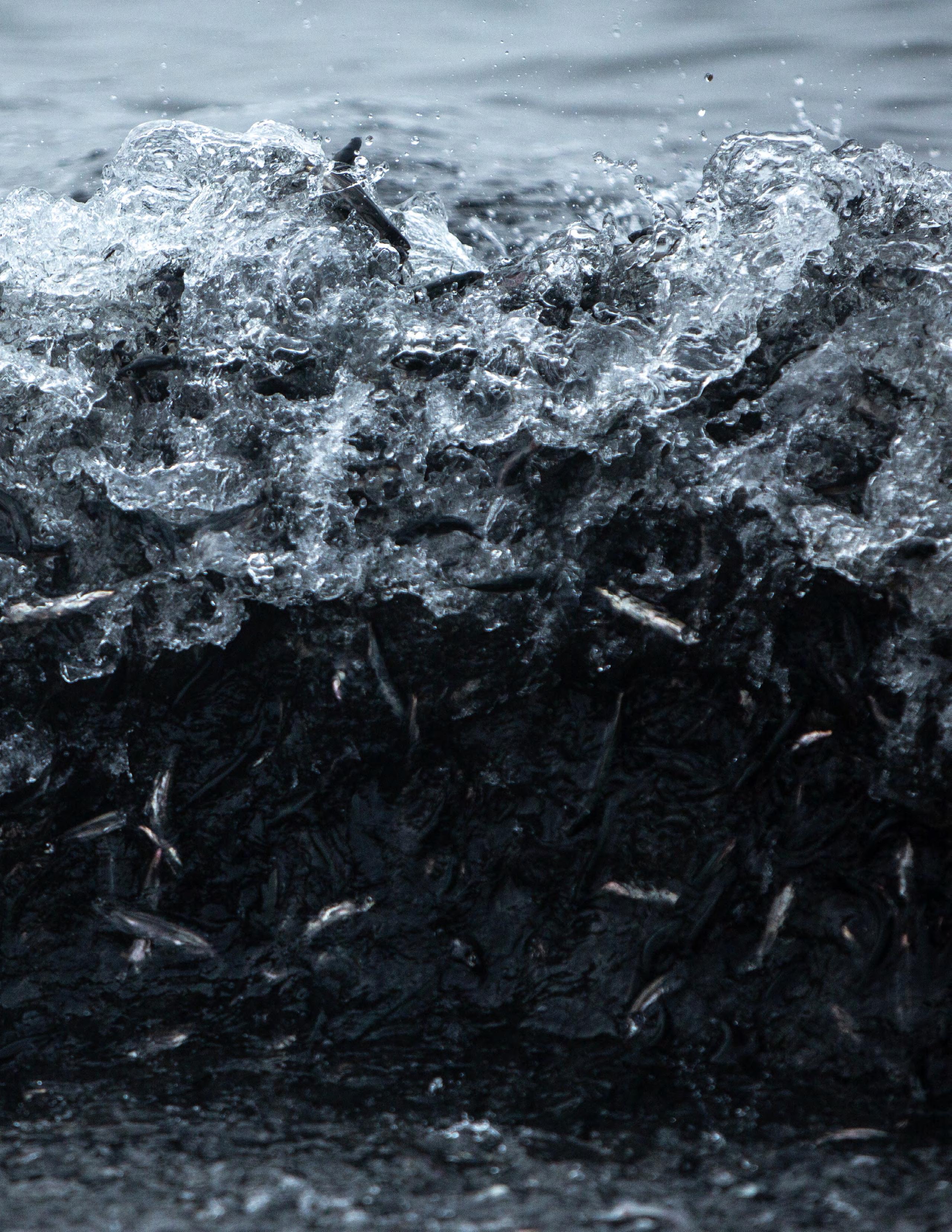
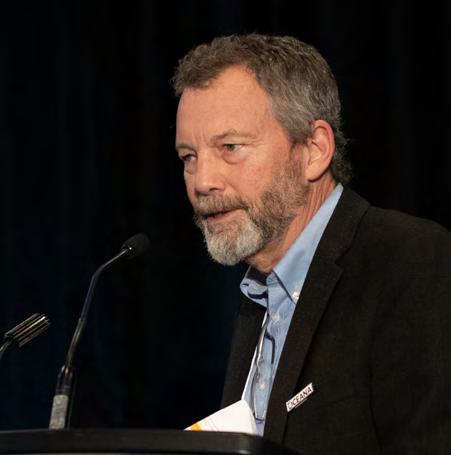
“Rebuilding and sustaining healthy fisheries for generations to come depends on the wise use of the best available science and adapting to conditions of increasing uncertainty. Yet the sad truth is Canada is failing to do so for too many stocks, with obvious and dire consequences.”
— Dr. Robert Rangeley, Science Director, Oceana Canada
but New Funding Could Change That Effective monitoring ensures the timely collection of dependable data about how much of each kind of fish are being caught. This, in turn, allows decision-makers to set appropriate seasonal catch limits that protect the industry over the long term. Inadequate monitoring can lead to overfishing, creating devastating consequences for the ocean, fisheries, and the coastal communities they support.
The 2019 federal Fishery Monitoring Policy promised to close monitoring gaps throughout the sector. But in November 2023, the Office of the Auditor General of Canada highlighted DFO’s failure to implement the policy in any of the 156 stocks identified for prioritization.
That echoes Oceana Canada’s own findings, which reveal that inconsistencies in monitoring have led to large uncertainties about fish harvest numbers. In fact, nearly 80% of wild marine fish populations currently lack fishing mortality estimates (see page 9).
To address these shortcomings, the government earmarked $30.9 million to advance implementation of the Fishery Monitoring Policy for 23 priority stocks by 2028. If invested effectively, this could dramatically scale up monitoring efforts, so Canada is no longer managing fisheries in the dark.
Purpose: Help prevent overfishing, control bycatch, and collect scientific information for stock assessments.
Across Canadian fisheries, reported levels of monitoring have increased significantly since 2017. However, much of this improvement was likely due to more documentation becoming available rather than to changes in monitoring practices. The Fishery Monitoring Policy has yet to be fully implemented in any fishery, and most indicators have stagnated in recent years.
* 2018 to 2022 data available at Oceana.ca/FisheryAudit2024
** New indicator in 2019
***2020 to 2022 data available at Oceana.ca/FisheryAudit2024
Good monitoring paints a clear picture of where and when fish harvesting takes place and how much of each species is removed from the ocean.
Count everything caught in a fishery — including for recreational and bait purposes — and account for all sources of fishing in management decisionmaking.
The Pacific Region’s groundfish trawl and halibut hook-andline fisheries provide examples of what rigorous monitoring systems look like, with 100% at-sea and dockside coverage. Since 2006, these fleets have shifted to electronic monitoring at sea, ensuring data accuracy while also tackling the widespread problem of observer harassment in Canadian fisheries. This advanced e-monitoring system provides a powerful model that other fisheries can adopt to collect reliable data in real time, ultimately strengthening fisheries management.
In November 2023, the Office of the Auditor General of Canada admonished DFO for failing to properly monitor the country’s commercial fisheries. It’s report — authored by Jerry V. DeMarco, Commissioner of the Environment and Sustainable Development — echoed Oceana Canada’s recommendations for DFO to hasten implementation of its Fishery Monitoring Policy, accelerate the rollout of its integrated information system, and review its third-party observer programs to tackle compliance issues.

“Not only do we need good data for the substantive decisions about sustainability of the fisheries, but we need good data so that there’s buy-in from the communities and the regulated industry in terms of confidence in the decisions that are being made that affect their livelihoods. There are two benefits: better data means better decisions and better support for those decisions.”
— Jerry V. DeMarco, Commissioner of the Environment and Sustainable Development
Integrated Fisheries Management Plans (IFMPs) provide important direction, clearly outlining how a fishery will be managed over a given period. Encouragingly, more than 90% of Canada’s stocks are now covered by IFMPs.
Rebuilding plans are also crucial tools, charting a path to restore critically depleted stocks. And they work. This year’s Audit showed that fisheries decisions for stocks that had rebuilding plans in development were more rigorous in following scientific advice aimed at achieving long-term recovery.
In 2022, rebuilding regulations under the modernized Fisheries Act came into effect, requiring the creation of high-quality
INDICATOR:
Purpose: Provide a planning framework for the conservation and sustainable use of Canada’s fisheries, clearly outlining how a fishery will be managed over a given period.
rebuilding plans within two years once a critical stock is listed under the Fish Stocks provisions. Despite these requirements, rebuilding plans have been put in place for only four of this Audit’s 33 critically depleted stocks.
DFO did make some progress. Although no new rebuilding plans were published between July 2, 2023, and July 1, 2024 — the timespan covered in this Audit — the Minister approved eight new rebuilding plans in April 2024.8
However, the pace of rolling out rebuilding plans continues to be unacceptably slow, putting the future of numerous stocks in serious jeopardy.
INDICATOR:
Stocks in the critical zone with rebuilding plans in place (%)
Purpose: Provide a planning framework to rebuild stocks out of the critical zone. Serious harm is occurring to stocks in the critical zone, and actions that support recovery (e.g., catch reductions, habitat restoration, closed areas, etc.) are crucial.
Despite a slight decrease from last year, the number of stocks with IFMPs has increased significantly since 2017. This trend is likely driven largely by the notable increase in 2019 when DFO published several new multi-stock IFMPs.
* 2018 to 2022 data available at Oceana.ca/FisheryAudit2024
No new rebuilding plans were published on DFO’s website by the July 1, 2024, cut-off date for this Audit. However, rebuilding plans were approved for eight index stocks (as well as for salmon, which falls outside the scope of this Audit). Draft plans appear to comply with new regulatory requirements and management decisions for those stocks in 2024 were also consistent with rebuilding measures.
8 A rebuilding plan was also approved for Okanagan chinook salmon, which is not covered in this Audit as Oceana Canada’s index stocks consist exclusively of marine species. Another two rebuilding plans, for Atlantic cod (3Pn4RS) and Northern shrimp (SFA 6), were approved in July 2024, and rebuilding plans for Atlantic mackerel and Atlantic cod (3Ps) were both published in September, outside the timeframe of this Audit.
MANAGEMENT RECOMMENDATIONS
Publish and implement rebuilding plans for 12 stocks as required by the Fish Stocks provisions.
Implement rebuilding plans for remaining stocks in the critical zone by 2026/2027.
Make management decisions that are consistent with the law.

“
To protect Canada’s fisheries, all stocks must be listed in the Fish Stocks provisions under the Fisheries Act, triggering rebuilding plans for critically depleted stocks and management decisions that sustain healthy populations.
The lack of a rebuilding plan for northern cod has led to unsustainable, ad hoc fisheries management, and stalled stock recovery. While the Fish Stocks provisions strengthen the Fisheries Act, following DFO guidelines and science to reduce risk of further decline is crucial. To achieve meaningful recovery, science advice must be at the forefront of decision-making.”
— Peter Shelton, former DFO research scientist in Newfoundland for 30 years
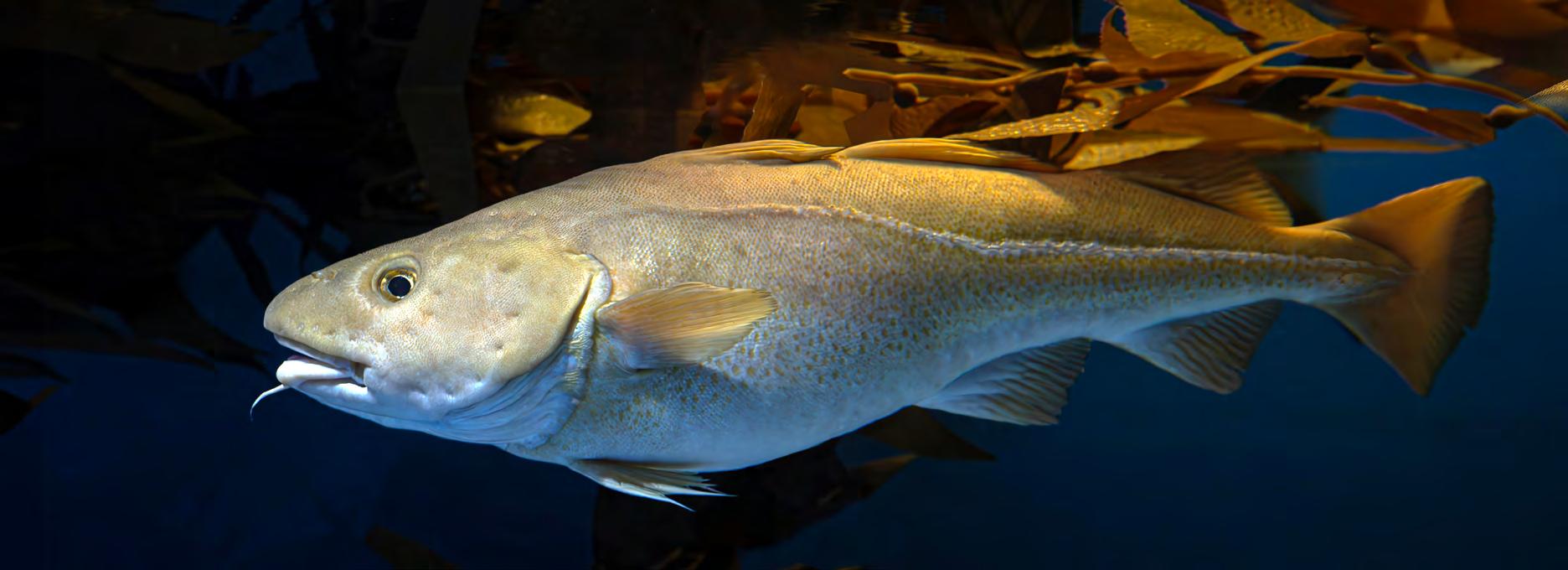
Canada’s inconsistent, crisis-driven fisheries management approach caused economic losses and delays in stock recovery, impacting 72,000 fishery workers and costing coastal communities millions of dollars.
Indigenous communities are deeply connected to fisheries, having stewarded these ecosystems for generations using practices that emphasize respect for living things, responsibility to future and past generations, and the interconnectedness of species, habitats, and people.
In Canada, several Indigenous groups have been advancing efforts to pair Indigenous Knowledge Systems (IKS) and Western-based science in their territories. But to make that possible, DFO needs to strengthen the law and modernize its policies.
Applying IKS and Indigenous law in decision-making is fully within the intent of the Fisheries Act’s guidance and policy. However, progress has been slow, despite federal and departmental commitments. Moreover, the current Precautionary Approach Framework and forage species policies under DFO’s Sustainable Fisheries Framework lack flexibility to fully embrace the holistic and relational values of IKS and ecosystem-based fisheries management.
The 2021 Fisheries Resource Reconciliation Agreement between eight coastal First Nations in B.C. and the Government of Canada marked a major step forward, giving those First Nations a lead role in revitalizing coastal fisheries and rebuilding depleted stocks.
DFO can build on this historic development, working with First Nations to create further collaborative management frameworks that respect Indigenous governance.
In doing so, it can fulfill core responsibilities under Canada’s Reconciliation Agenda and the United Nations Declaration on the Rights of Indigenous Peoples, promote resilient ecosystems, and protect cultural security, while ensuring the long-term sustainability of fisheries.
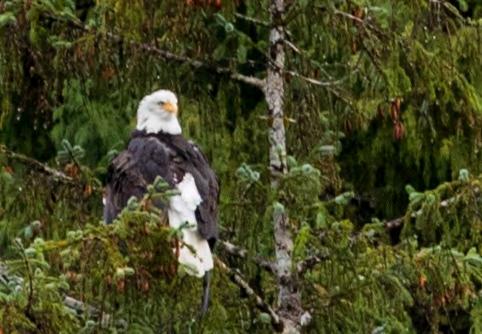
science — “TwoEyed Seeing” — provides time-tested ecosystem management practices.9
Modernize the suite of policies under the Sustainable Fisheries Framework to meaningfully include Indigenous Knowledge Systems in fisheries management and science processes.
Implement collaborative fisheries management agreements.
Support fisheries, habitat monitoring, and management initiatives by Indigenous Peoples.
9 Two-Eyed Seeing is a term based on the Mi’kmaw concept of Etuaptmumk, first coined by Mi’kmaw Elders Albert Marshall and Murdena Marshall. Source: Bartlett C., Marshall M., Marshall A. (2012). Two-Eyed Seeing and other lessons learned within a co-learning journey of bringing together Indigenous and mainstream knowledges and ways of knowing. Journal of Environmental Studies and Sciences, 2: 331–340. https://doi.org/10.1007/s13412-012-0086-8
Each year, Pacific herring return from the open ocean to spawn along the coast of British Columbia. The annual event turns the waters turquoise with milt and coats rocks, eelgrass, and seaweed with eggs.
That influx of nutrients plays a pivotal role in local ecosystems, feeding everything from groundfish and salmon to marine mammals and seabirds. It’s also crucial to the culture and wellbeing of coastal First Nations, who practise traditional “spawn on kelp fisheries” that harvest nutritious herring eggs without harming the fish.
But industrial overfishing has seriously depleted Pacific herring. Today, stocks along the Central Coast are in the cautious zone, while those around Haida Gwaii are categorized as critical. Herring in the Strait of Georgia, Prince Rupert District, and West Coast of Vancouver Island have fluctuated between healthy and cautious levels while facing increased pressure from climate change and concentrated fishing efforts.
Two Indigenous-driven plans provide examples of how to boost the resilience of herring stocks.
The Haida Gwaii herring rebuilding plan — developed collaboratively by the Council of the Haida Nation, DFO, and Parks Canada — applies an ecosystem-first approach that recognizes the complex interdependencies that exist within marine environments.
Meanwhile, the plan developed by the Kitasoo Xai’xais First Nation to manage Pacific herring within its territory models respect and reciprocity, two of the Nation’s legal principles.
Both plans put a priority on maintaining enough herring to support a healthy marine ecosystem — and the First Nations cultures that depend on it.

“Stewardship is not just about our jobs, it is also our life and responsibility. Indigenous stewardship of herring in Kitasoo Xai’xais territory is guided by respect and reciprocity, bolstered by generations of knowledge and experience. The problems facing fisheries can be solved by working in collaboration, bridging the gaps in law and policy to secure an abundant future for all.”

Five years after Canada passed the modernized Fisheries Act, implementation has been slow and inconsistent
In 2019, the federal Fisheries Act was amended to make rebuilding fisheries the law for the first time in its 150-year history. Once a critical stock is listed under the Fish Stocks provisions — which came into force in 2022 — DFO must develop and implement a rebuilding plan for it.
The Act also promotes transparency in decision-making, requiring DFO to ensure that fishing levels of a stock are consistent with rebuilding and to publish any reason for amending rebuilding plan timelines.
These changes make an impact. In 2024, there was a stark difference between the treatment of stocks that are protected under the rebuilding provisions of the Fisheries Act and those that aren’t. When Oceana Canada analyzed 16 key stocks, it found stocks without that protection — like capelin — continue to be overfished and mismanaged.
In contrast, for critically depleted stocks that are subject to the Fish Stocks provisions, rebuilding was promoted more consistently. For example, fisheries decisions for listed stocks like Atlantic mackerel were more rigorous in following scientific advice and were based on measures defined in rebuilding plans.
The 2024 northern cod decision was a notable exception. The decision to reopen the commercial northern cod fishery after a 32-year moratorium — with a 38% quota increase over last year’s stewardship fishery for the stock — was not scientifically justified. It also ignored the Precautionary Approach and the intent of the Act to grow stocks and prevent further decline.

Despite the clear legal framework, the federal government has been slow to act. To date, only one batch of 30 stocks has been listed under the Fish Stocks provisions, and a proposed second batch of 65 stocks has yet to be added in regulations. At the current pace, it will take 16 years before all stocks are batched in.
For the Fish Stocks provisions to be effective, all federally managed stocks must be listed under the regulations, thereby triggering the legal obligations for rebuilding depleted populations and sustainably managing healthy ones.
If ambitious action were taken to include all remaining fish stocks by next year, all critical stocks could have rebuilding plans by 2027
Prescribe all remaining stocks in the critical and cautious zones to the Fish Stocks provisions in the Fisheries Act by December 2024.
Include all other stocks in regulations by 2025.
Once again, the quality of fisheries management decisions varied in 2024. Some fisheries followed scientific advice, including those for Haida Gwaii Pacific herring, the spring spawner population of Atlantic herring, and Atlantic mackerel.
These stocks are already listed under the Fish Stocks provisions of Canada’s updated Fisheries Act, affording them greater legal protections. As a result, decisions on allowable fishing levels were scientifically justified and clearly followed the legal and policy principles of rebuilding depleted fish populations to healthy levels.
However, the 2024 season saw several short-sighted decisions by the Minister of Fisheries and Oceans, risking the long-term health of Canada’s marine ecosystems and the fisheries they support.
For example, this year the Minister opened and increased the quota for the commercial northern cod fishery, for the first time in decades. But the decision was made without a plan to ensure stock recovery, disregarding clear scientific evidence — including DFO’s own models — that increased fishing pressure would send the stock back into the critical zone within a few years.
Pacific herring (Haida Gwaii)
Atlantic herring (Southern Gulf of St. Lawrence spring spawner)
Atlantic mackerel
Worse still, the reopening came on the heels of the decision to continue overfishing capelin, northern cod’s primary source of food (as well as an important source of food for whales, seabirds, and local people). The depletion of this important forage species threatens commercially important fisheries and the resilience of the entire Northeast Atlantic marine ecosystem.
Not all fishery decisions were clear hits or misses. Consider redfish. Although the stock is not yet listed under the Fish Stocks provisions, the reopening of its commercial fishery came with new and improved management measures. However, the Minister undercut those strong, science-based measures by setting a quota more than double the initially proposed amount, potentially jeopardizing redfish recovery and other groundfish species often caught as bycatch.
Meanwhile, the decision to cut the total allowable catch for the fall spawner population of Atlantic herring in the Southern Gulf of St. Lawrence is partially consistent with science. However, the Minister’s reductions were far too modest. With the stock rapidly declining to the critical zone, the new catch level of 8,500 tonnes isn’t low enough to enable recovery.
Capelin (2J3KL)
Atlantic herring (Southern Gulf of St. Lawrence fall spawner)
Northern cod (2J3KL)
Atlantic herring (Southwest Nova Scotia/Bay of Fundy spawner)
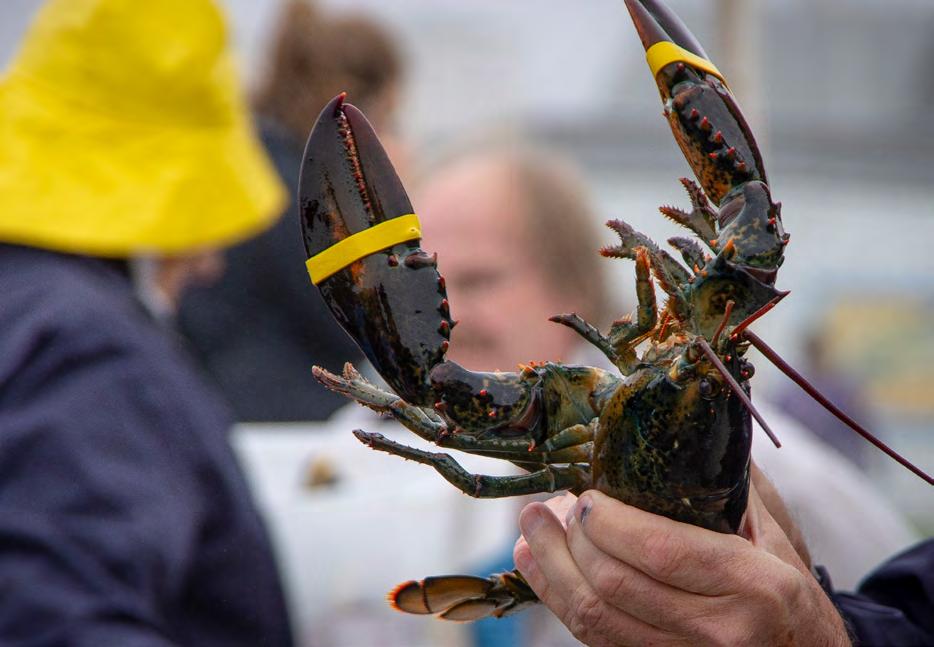
With the introduction of rebuilding regulations in 2022 and the prioritization of 12 critical stocks for rebuilding, there is renewed ambition to recover depleted fish populations.
Rebuilding plans outline transparent, evidence-based approaches to restore depleted stocks toward healthy levels. They provide specified timelines, while also considering the socioeconomic and cultural importance of fishing for coastal communities.
In April 2024, the Minister of Fisheries and Oceans approved new rebuilding plans for eight index stocks covered in this Audit.10 Although none of the plans were made publicly available by the July 1, 2024, cut-off date for this Audit, they mark a significant milestone in implementing Canada’s commitment to sustainable fisheries management.
Oceana Canada’s review of draft versions suggest that the quality of these unpublished rebuilding plans is substantially
better than past efforts. However, the work is far from complete. Many critical stocks still lack adequate rebuilding strategies, and the pace of implementation must be accelerated to prevent further environmental and economic losses.
Putting Canada’s fisheries on the path to recovery is a smart investment, creating huge benefits for marine life and coastal communities. For example, experts estimate that:
• In as little as 10 years, a rebuilt northern cod fishery could provide 16 times more jobs and be worth up to five times more than its present value.11
• Rebuilding Atlantic mackerel could lead to benefits estimated at over $54 million, with a 12.9% return on the investment.12
• A rebuilt herring stock in the Bay of Fundy could result in higher commercial catches worth at least $402 million.13

10 A rebuilding plan was also approved for Okanagan chinook salmon, which is not covered in this Audit as Oceana Canada’s index stocks consist exclusively of marine species. Another two rebuilding plans for index stocks were approved later in July 2024, outside the timeframe of this Audit.
11 Based on average historical catches from 1983–1989, assuming a rebuilt fishery of more than 209,000 tonnes. Source: Oceana Canada (2019). Oceans of Opportunity: The Economic Case for Rebuilding Northern Cod https://oceana.ca/wp-content/uploads/sites/24/the_economic_case_for_rebuilding_northern_cod_report.pdf
12 Oceans North (2020). The Jig is Up: Millions at Stake in DFO’s Failed Actions to Rebuild the Depleted Atlantic Mackerel Stock. Based on economic analysis conducted by Gardner Pinfold Consultants Inc. https://www.oceansnorth.org/wp-content/uploads/2020/11/The-Jig-Is-Up-report-FINAL.pdf
13 Oceans North (2024). Overlooked & Undervalued: The Economic Case for Rebuilding Forage Fish. Based on economic analysis conducted by Gardner Pinfold Consultants Inc. https://www.oceansnorth.org/wp-content/uploads/2024/05/Overlooked-and-Undervalued-Rebuilding-Forage-Fish.pdf

Rebuilding plans can help Canada achieve its vision of sustainable and prosperous fisheries. But they need to be robust — and rigorously enforced.
Recovery objectives and targets. A clear and ambitious recovery target ensures that efforts are not just focused on the immediate stabilization of a stock but also on long-term sustainability.
Recovery timelines. Setting a well-defined timeline is critical, ensuring that efforts are focused, progress can be tracked, and adjustments can be made if necessary.
Management measures. All plans now incorporate stronger monitoring requirements, not just for the rebuilding stocks but also for other commercial fisheries that interact with the stock in question. This approach ensures that bycatch is effectively mitigated.
Collaboration and consultation. Collaboratively developed rebuilding plans are essential for addressing the socioeconomic, cultural, and ecological impacts of fisheries management.
The Haida Gwaii Pacific herring rebuilding plan identifies a comprehensive suite of ecological, cultural, social, economic, governance, and management objectives, along with shortand long-term recovery targets for bringing the stock to healthy levels.
The Atlantic mackerel rebuilding plan is designed to meet its target in as soon as six to seven years without any fishing activity. But the timeline is flexible, extending slightly if fishing by the United States continues at 2022 levels.
In the Gulf of St. Lawrence, Atlantic herring and four groundfish stocks are now subject to stricter bycatch limits, with commercial moratoriums maintained to minimize fishing mortality as much as possible.
For Haida Gwaii Pacific herring, an ecosystem-based rebuilding plan was developed through a partnership between the Council of the Haida Nation, DFO, and Parks Canada. The goal is to ensure that herring continue to play their crucial role in the ecosystem while also fulfilling the Haida Nation’s cultural, social, and economic needs.
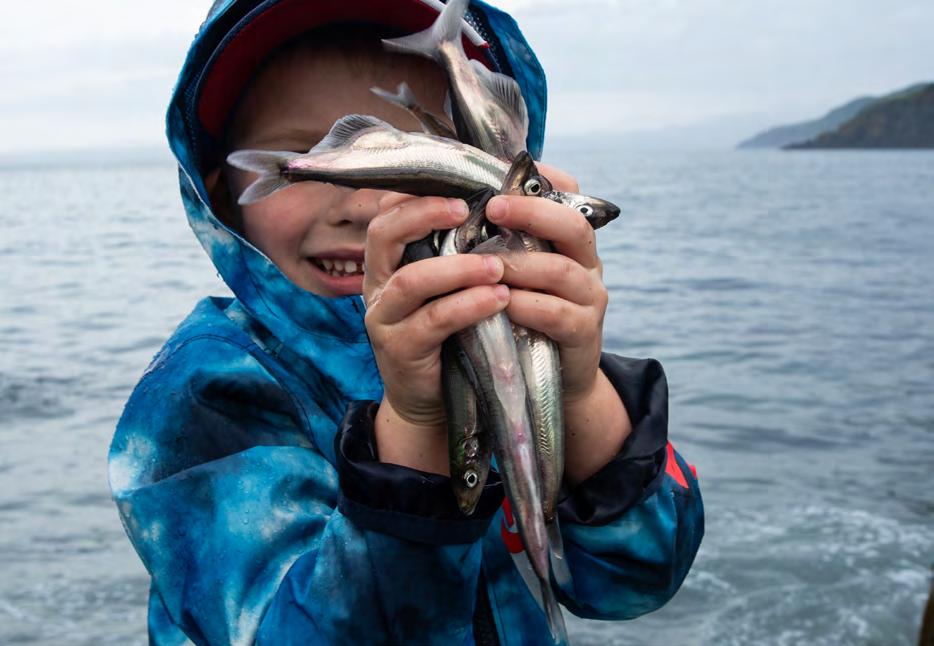
Canada’s modernized Fisheries Act provides a bold framework to restore abundance and prosperity to our fisheries. But five years since it became law, slow implementation has meant missed opportunities and costly consequences for the environment and the economy.
So much more is possible. By fulfilling its commitments, DFO could have rebuilding plans for all critical stocks by 2027 and robust measures in place to keep fisheries healthy for future generations.
In the year ahead, Oceana Canada calls on DFO to leverage the knowledge and policy tools already available to deliver on commitments and implement real change on the water. This means:
Prescribe all remaining stocks to the Fish Stocks provisions in the Fisheries Act by 2025, and make management decisions that are consistent with the law.
Account for climate change effects on marine ecosystems by implementing climate-adaptive approaches in fisheries management and prioritizing rebuilding forage fish.
2
Manage fisheries based on the best available science and Indigenous Knowledge Systems by modernizing the suite of policies under the Sustainable Fisheries Framework to meaningfully implement Two-Eyed Seeing approaches, including through collaborative management agreements.
Count everything caught in a fishery — including for recreational and bait purposes — and account for all sources of fishing in management decision-making.

The data in this report focuses exclusively on Canada’s marine fisheries. This includes finfish, shellfish, and other invertebrates but not freshwater fish or fish, like salmon, that spend part of their life in freshwater. The 2024 data in this report covers the period from July 2, 2023, to July 1, 2024. Note that each year, Oceana Canada corrects minor errors found during the update process. As a result, some of the values for previous years may differ slightly from past reports.
Canada’s fisheries management performance is assessed using indicators developed from globally accepted best practices and DFO’s policy framework and is based on data from 194 index stocks14 published on DFO websites.
For full details about the methodology and analysis, visit oceana.ca/FisheryAudit2024

Assign a status and limit reference point (LRP) to at least half of all stocks whose status is uncertain.
Use the new DFO Science Advisory Report template for all stocks, incorporating risk-based advice in the “Ecosystem and Climate Change Considerations” section.
Integrate environmental variability into stock assessments and projections, where appropriate.
Implement DFO’s strategy for an Ecosystem Approach to Fisheries Management (EAFM), aligning with climate change adaptation and Indigenous knowledge.
Assign a status and LRP for all remaining stocks whose status is uncertain.
Advance implementation of the Fishery Monitoring Policy for 23 stocks that currently lack sufficient data.
Publish an annual report evaluating progress towards policy objectives for all major stocks.
Complete implementation of the Fishery Monitoring Policy for the 23 major stocks noted above, and apply the Policy to at least five more stocks in each region.
Harmonize information systems to ensure timely, accessible, and high-quality monitoring data.
Ensure management decisions account for recreational, commercial, and bait-fishery removals.
BY DEC 2024
Prescribe all remaining stocks in the critical and cautious zones to the Fish Stocks provisions.
BY 2025
Publish rebuilding plans for 12 currently prescribed stocks.
Initiate at least seven new rebuilding plans for proposed stocks not yet prescribed to the Fish Stocks provisions.
Ensure management decisions for forage species prioritize their ecosystem function, aligning with DFO’s Policy on New Fisheries for Forage Species.
Prescribe all remaining stocks to the Fish Stocks provisions.
BY 2026–2027
Implement rebuilding plans for all stocks in the critical zone.
BY 2025
Codify the application of Indigenous Knowledge Systems in fisheries management through Indigenous-led guidelines.
Support fisheries, habitat monitoring, and management initiatives by Indigenous Peoples.
Publish Indigenous-led objectives in annual work plans.
Implement collaborative fisheries management agreements with Indigenous organizations.
BY 2026-2027
Modernize the suite of policies under DFO’s Sustainable Fisheries Framework to meaningfully include Indigenous Knowledge Systems in fisheries management and science processes.
Let’s build an ocean of abundance, together.
Share your passion for ocean protection with friends and family. 1 2
Sign the petition and add your voice to the urgent call to rebuild Canada’s fish populations at Oceana.ca/RebuildAbundance.
The authors would like to thank the many people, including several Oceana Canada team members, who contributed to this report, specifically Jack Daly, Vaishali Dassani, Kim Elmslie, Tess Geers, Isabelle Jubinville, Josh Laughren, Josh Martin, Lauren McClennan, Rachelle Naddaf, Madeline Piscetta, Julie Stauffer, Jennifer Whyte, and Lesley Wilmot.
Oceana Canada was established as an independent charity in 2015 and is part of the largest international advocacy group dedicated solely to ocean conservation. Oceana Canada has successfully campaigned to ban single-use plastics, end the shark fin trade, make rebuilding depleted fish populations the law, improve the way fisheries are managed, and protect marine habitat. We work with civil society, academics, fishers, Indigenous Peoples, and the government to return Canada’s formerly vibrant oceans to health and abundance. By restoring Canada’s oceans, we can strengthen our communities, reap greater economic and nutritional benefits, and protect our future.